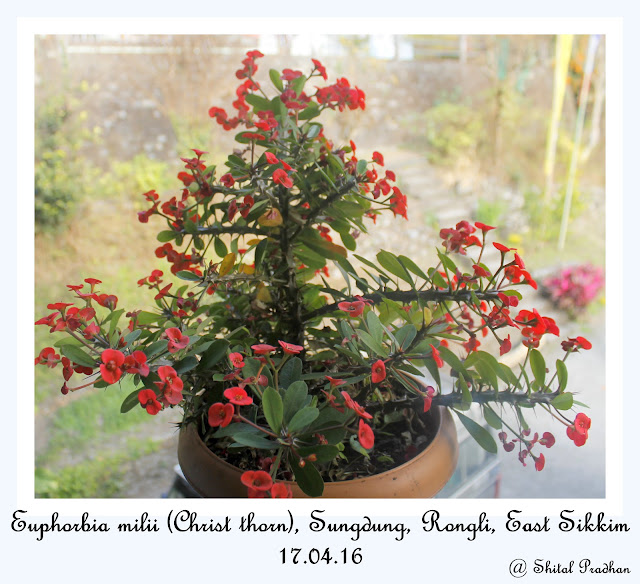.JPG) |
Hydrangea macrophylla (Big leaf hydrangea)
Place : Khechuperi Lake , West SikkimDate: May 25, 2014 Pic: Shital Pradhan |
.JPG) |
Hydrangea macrophylla (Big leaf hydrangea)
Place : Khechuperi Lake , West SikkimDate: May 25, 2014 Pic: Shital Pradhan |
Scientific
classification
Kingdom: Plantae
Phylum:
Class:
Order: Cornales
Family: Hydrangeaceae
Genus: Hydrangea
Species: H. macrophylla
Binomial
name: Euphorbia milii Des Moul.
Other
Names: bigleaf hydrangea, French hydrangea, lacecap hydrangea, mophead
hydrangea, penny mac and hortensia
Special feature: It
is a native to China and Japan.
“H. macrophylla blooms can be blue, red, pink, light purple,
or dark purple. The color is affected by soil pH. An acidic soil (pH below 7)
will usually produce flower color closer to blue, whereas an alkaline soil (pH
above 7) will produce flowers more pink. This is caused by a color change of
the flower pigments in the presence of aluminum ions which can be taken up into
hyper accumulating plants”. (Source: Wikipedia)



